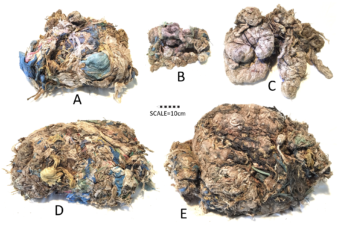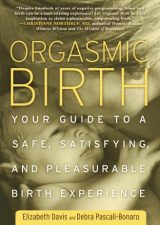
BPA is a hormonally active chemical found in everything from cash register receipts to soup and beverage cans to plastic wrap and bottles. Will good news for conscious consumers in California mean lifestyle changes for people in the Middle East?
BPA though banned in products like baby bottles is still all around us. An ‘estrogen mimicker’, it has been linked to precocious puberty in females and the feminization of males including urogenital defects and malformed penises.
Plastics that are labeled with a number 7 contain BPA. While governments around the world have taken measures to reduce exposure to this chemical, estimates are that up to 90 percent of humans have traces in their bodies. So we have to ask, where is the BPA, or Bisphenol A, coming from? Read on to find out good reasons why you should limit plastic in your lives, including what’s in your food, and every bit of plastic that goes into your kid’s mouth.
The state of California recently put another nail in BPA’s coffin, listing it as a reproductive toxin.
The downside is that this ruling by the Food and Drug Administrations has no direct bearing on consumers in the Middle East. A ban on BPA in bottles is insufficient in the long term, failing to address the many sources of this compound or the long list of other compounds tweaking our reproductive health.
It is simply insufficient protection against the potential harm to all of us.
The Wall Street Journal reports: “BPA is found in hundreds of plastic items from water bottles to CDs to dental sealants. Some researchers say ingesting the chemical can interfere with development of the reproductive and nervous systems in babies and young children.”
They Wall Street Journal article point to dozens of studies showing such an effect from BPA in rodents and other animals.
It continues: “But the FDA has repeatedly stated that those findings cannot be applied to humans. The federal government is currently spending $30 million on its own studies assessing the chemical’s health effects on humans.
“It is estimated that ‘about 90 percent of Americans have traces of BPA in their urine, mainly as a result of food and beverage packaging.”
Despite the FDA’s caution regarding applying the results of animal studies to human outcomes, consumer groups have taken a stronger stance
For example, the Plastic Pollution Coalition of which Green Prophet is a member states that “the alarm over the widespread use of BPA is entirely warranted.
“BPA has been linked with increased risk for cardiovascular disease, breast and prostate cancer, early puberty, obesity, diabetes, infertility, erectile dysfunction, and learning and attention-related disorders.”
They reference a review of more than 800 studies published recently in the journal Endocrine Reviews which shows that even extremely small doses of BPA can be toxic.
“The study authors conclude that due to the effects of low doses of hormone-disrupting chemicals, ‘fundamental changes in chemical testing and safety determination are needed to protect human health’.”
BPA is just one worrisome compound in some plastics. According to an October 2011 list compiled by TEDx’s Endocrine Disruption Exchange, there are at least 870 known chemicals that can mimic hormones and therefore alter our bodies and our systems.
In a May 2012 article on harmful chemicals, Nicholas D. Kristof of the New York Times wrote that “nation’s safety system for endocrine disruptors is broken.”
Citing several studies and conclusions by scientists – linking things like congenital birth defects in boys to micro-penises in alligators – it’s the opinion of this author that regulatory agencies and governments around the world have essentially failed to protect their citizens from a decades long assault on our sexual and reproductive health.
Kristoff writes: “Scientists have long known the tiniest variations in hormone levels influence fetal development. For example, a female twin is very slightly masculinized if the other twin is a male, because she is exposed to some of his hormones. Studies have found that these female twins, on average, end up slightly more aggressive and sensation-seeking as adults but have lower rates of eating disorders.”
Why after almost 20 years since the term endocrine disrupters was coined are we still so exposed and at risk from these chemicals? Aside from a failure of adaquate protection, in part it may also be because most don’t fully appreciate how nuanced and sensitive the endocrine system is.
It takes very little of a hormone, synthetic or not, to impact us. Microscopic levels of exposure (parts per billions), the timing of exposure (fetal exposure is often far riskier) or long-term damage (in some cases, it is children of those who were exposed who suffer the consequences) means we are all at risk.
What can you do besides avoid plastic bottles with or without BPA? The answer is simple: Avoid plastics all together. We dare you!
Image via Boston Public Library




I really like your blog.. very nice colors & theme. Did you make this website yourself or did you hire someone to do it for you?
Plz respond as I’m looking to design my own blog and would like to find out where u got this from. cheers
Recommending avoiding or being wary of ALL plastics shows an extreme ignorance and over-simplication about plastics and the BPA issue. For plastics in contact with food, there are only TWO types that contain BPA — polycarbonate (PC) and epoxy resins. PC was used for baby bottles and sports bottles because it is very tough and sterilizable — it is NOT used and never has been used for regular disposable food containers (partly because PC is about 5x the price compared to regular food packaging plastics).
About 99% of plastic packaging (e.g. bottles, jars, wraps, etc) used for food are polyethylene (PE), polypropylene (PP) and polyester (PET) — and NONE of these uses even a tiny trace of BPA. It simply is NOT used to make these more common plastics.
The other food contact of BPA is via epoxy resins used to line tin cans and, sometimes, to line the underside of metal lids on jars. This invisible lining can leach part per trillion amounts of BPA into food under certain circumstances.
This blog also fails to mention that recent studies have shown that even though trace (parts per BILLION) of BPA can be found in human urine, the amount actually in the blood stream is too low to detect and far below the trace levels used in experiments in mice and other animals that claim adverse health effects. It is believed that the body deactivates the BPA very quickly so that it effectively never gets into the blood stream —- which is necessary for it to have the adverse health effects claimed.
If you are going to worry about endocrine disruptors in trace amounts, then you should avoid eating many foods, especially soy (and also nuts, beer, wine, and a whole host of fruits), that contain NATURALLY OCCURRING disruptors, many of which are known to bind much more strongly to estrogen sites than BPA (that is, they are potentially much more toxic). For example, some components in soy flour are know to disrupt the reproductive cycle in mice and and affect human menstruation. You likely get 100s or 1000s of times more of these “organic” (i.e. not synthetic) endocrine disruptors in your foods than from any plastics.
“Recommending avoiding or being wary of ALL plastics shows an extreme ignorance and over-simplication about plastics and the BPA issue.”
NOPE.
Perhaps BP-A isn’t in those other plastics but BP-A isn’t the only endocrine disrupting compound used in plastics. Recent studies have shown that virtually ALL currently used plastic formulations have estrogen-mimicking effects. BPA-free examples were some of the worst offenders. BP-S is becoming the standard replacement in formulating BP-A free plastics even though chemically speaking it is likely to mimic estrogen just as effectively as (and possibly even better than) BP-A. This means that “BPA-free” is in all likelyhood WORSE than BP-A.
Don’t take my word for it. Do the research yourself. Google BP-S. Google phthalates. Google xenoestrogens. But whatever you do, don’t listen to the faceless commenters on the internet that tell you that “nothing is wrong, go back to your houses.” Most PR firms hire people to post anonymous comments. Most big corporations hire PR firms. ‘Opinion spammers’ are just as prevalent now as shills and plants and stooges were in the days of snake oil salesmen. Only difference is, these days the snake oil salesmen are multi-billion dollar corporations, with more money and power and influence than you or I could imagine.